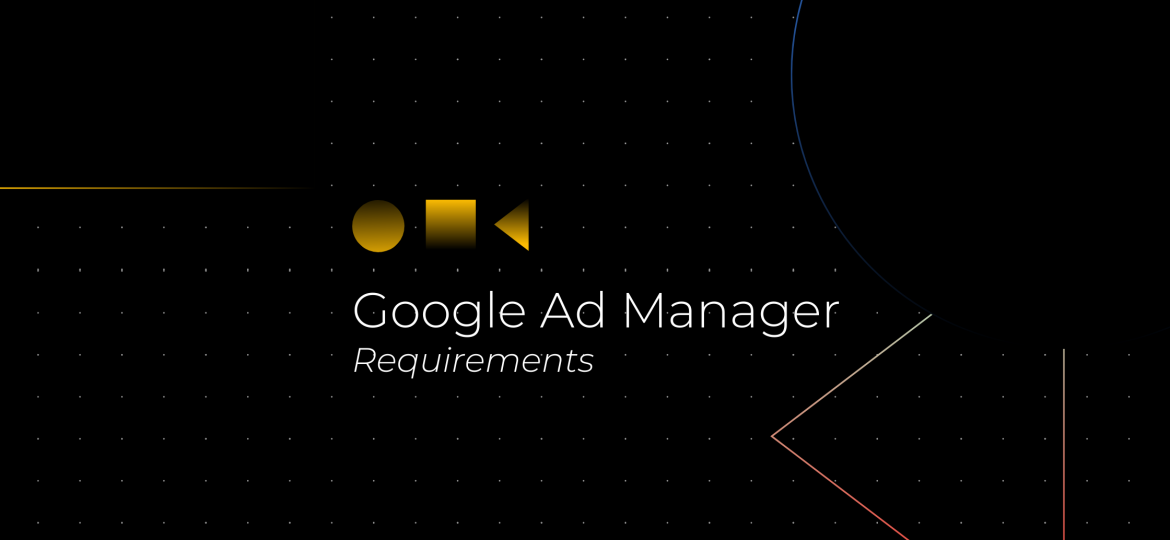In order to earn more money from their ads, many digital publishers experiment and constantly adjusting their ad revenue strategies. In this piece, we have selected 5 great tactics to optimize your ad revenue. Experiment with different Ad networks Ad networks are businesses that collect ad supply from publishers and connect it with the demand of advertisers. It is essential that you engage with the right ad network as a publisher, in order to increase your revenue. You must ensure that your site visitors see appropriate ads. Certainly, there are numerous ad networks to pick from, but it is better if you select the one that is the best fit for you. Don’t pick an ad network based on its one-of-a-kind capabilities, instead choose an ad network that fits your website needs. Test different ad formats Experiment with different ad formats to see what works best for your site. As a matter of fact, there is no such thing as a one-size-fits-all solution. Ad formats that work for other websites may not work for you. So, if you want to increase your eCPM, you must do your own trials. Outstream Video Ads Video ads have made significant advances in the marketing business. Viewers are engaged in what the ad is about and the brand or company it is from.Outstream video ads are defined by Google Advertising as “mobile-only ads that display on partner sites and applications outside of YouTube,” and they can play in an app or on a page…
Revenue Optimization
As a publisher, once you reach a certain level of growth and size, you need to start thinking about taking greater control over your advertising. Google AdSense is great at delivering AdSense ads, however, if you want to serve your own ads from advertisers or access 3rd party demand, then you need to start using an Ad Server and Google Ad Manager is the most popular in use by global publishers. What is Google Ad Manager? In 2018, Google rebranded their services and merged both DoubleClick Ad Exchange and DoubleClick for Publishers into Google Ad Manager (GAM); DoubleClick Ad Exchange (ADX) enabled publishers to use Google’s real-time marketplace to buy and sell display advertising space on their website DoubleClick for Publishers (DFP) enabled publishers to sell, schedule, deliver, and manage their own ad inventory as a free to use ad management tool So the Google rebrand brings display advertising demand from the Google marketplace and managing your own inventory with the possibility of ad serving 3rd party demand into one Google Ad Manager platform. Why do I need GAM? First of all, let’s explain the two main parts of Google Ad Manager and how they relate to a publisher’s journey; AdX and DFP. Traditionally, publishers tended to move from AdSense to AdX as they grow and hope to better monetize their inventory. This transition allowed publishers to sell impressions with AdX as opposed to selling clicks with AdSense. Another difference is the access to worldwide demand from other networks outside…
Bid shading is a method used by buyers in first-price auctions to avoid overspending, and its importance has grown as every major exchange has transitioned to a first-price auction. Simply explained, it is a campaign feature that can help advertisers save money. Here’s an explanation of what it means and how it works. Bid shading defined There are two types of auctions in programmatic advertising: first-price and second-price. The highest bidder determines how much an impression is sold for in a first-price auction. The sale price of an impression is determined by the second-highest bidder in a second-price auction. Bid shading has emerged as a middle ground between the two. So, based on an estimate performed by the ad tech partner, the buyer will pay somewhere between the second-price and first-price value. How it works Because of the shift toward first-price auctions, the technology is mostly accessible as a free service on supply-side platforms and is becoming a feature increasingly used in DSPs. The vendor will study bid-history data, such as what bid rates normally win on a specific website or in a specific ad location, or at what price bids are lost, to determine what a bid should be that is midway between the first and second offers. Bid shading was created as a way to please buyers who were unhappy with having to pay far higher prices than they were used to when first-price auctions became popular. However, it is not particularly transparent, so buyers must rely on…
As a publisher, you’re always looking for methods to improve your site’s performance, whether it’s in terms of monetization, layout, or user experience. You may have heard other publishers discuss “Lazy Loading” or “Ad Refresh” and how it has helped them reach their objectives.What works for one publisher’s website may not work for another. In this piece, we will look into lazy loading ads to help you determine whether it’s worth it to implement them. So, what is Lazy Loading? When a visitor accesses a web page, all of its contents are typically rendered and downloaded in a single instance. The browser can cache the web page, but this does not always imply that people will be able to access it completely. Pages with lazy loading ads are prepared using placeholder content or empty containers that are replaced with genuine content only when the user scrolls down to it. In short, webpage material is loaded only when it is visible on the user’s screen. When implemented correctly, the primary benefit of lazy loading is reduced bandwidth utilization. In an image gallery, for example, instead of loading all images, just those that are likely to be viewed are loaded.It does, however, entail dangers, hazards, and trade-offs. Publishers should not assume that lazy load is better for their audience because those who try it typically experience varied results. Some businesses have gone through hundreds of implementations before settling on a single version that enhances user engagement or other KPIs. Typically, publishers attempt…
Today’s world is defined by speed, many innovations were born from the challenge of getting something done quicker. We want to reduce our commute to work, we want our internet to be as fast as possible, we don’t want to wait around connecting to calls and virtual meetings. Page Load Speed is no different. With the complexity of page infrastructure and setup coupled with SEO and monetization, we will help you understand Page Load Speed and what you can do as fast as possible! What is Page Load Speed Page Load Speed is simply how fast content on your web page is able to load. Some people call this your Site Speed. The content that affects page load speed include CSS, HTML, JavaScript, images, caching and any tags present and firing on your web site. Why does Page Load Speed matter? Page Load Speed is a critical factor in the success of an online publishing business. Here are 3 reasons why site speed is so important: User Experience; How many times have you visited a site and been frustrated by how slow it is to load either ads or content? This poor user experience will lead users to not hang around and wait for the site to become usable and they will leave. SEO; Making sure users can find your site is of paramount importance. Operating a website is not a case of ‘If you build it they will come’, optimizing your appearance in search engine results will increase your…
These days there is so much information at our disposal, with metrics for almost everything. Sometimes, there are some metrics that do not just show a picture but also tell a story. For example, for Students, your GPA (Grade Point Average) shows how good a student you are, for growing businesses your CAC (Customer Acquisition Cost) shows you how much it costs to gain a new customer and grow your business. For Publishers like you, there is Page RPM. What is Page RPM? Page RPM refers to the revenue a publisher would expect to see generated per one thousand page views. RPM is an acronym for Revenue Per Mille, with Mille being the Latin word for a thousand (for those of you thinking back to college that’s why Roman numerals have M for a thousand!). RPM tells a publisher how much revenue is being generated for each page that is viewed on their website. A publisher can even calculate the Page RPM for individual pages. How do you calculate it? Before you can calculate Page RPM, you need to know 2 numbers; Total Ad Revenue – how much ad revenue you think you have made Total Page Views – how many times a user views a page The formula used is as follows: Total Ad Revenue / Total Page Views * 1000 Example: If you have 4k page views per month and an estimated ad revenue of $30, your Page RPM would be ($30/4000)*1000 = $7.50 Why it is Important?…
When it comes to programmatic web monetization, people automatically think of display adversiting and openRTB. There is, however, a lot more to explore in the ecosystem and affiliate marketing is a prime example of that. Such programs are actually one of the oldest types of advertising and surprisingly, their internet revival has somehow been widely neglected by the publishing world. In spite of their relatively low popularity, affiliate deals have an enormous potential and have become an integral part of the monetization strategy for many who have implemented them. So, let’s have an overview of what Affiliate Programs are and how to use them.
The advertising world is in a lot of trouble right now, due to the global pandemic taking a heavy toll on the economy. With marketing budgets being pulled back and some businesses even shutting down altogether, ad spend is at a low that’s unnatural for this time of the year. But wait, there is some good news in all this. Just because the market is down, it doesn’t mean there’s nothing you can do as a publisher to recover some lost revenue. Over the past month, we’ve been hard at work to come up with a response to the crisis and this is what we found.
Producing engaging content should be the top priority for publishers at pretty much all times. While it may be difficult to pinpoint what exactly that consists of, it’s without a doubt the make-or-break factor for any digital media business. A lesser known fact among industry circles is that you can actually generate way more revenue with even half the traffic, if you manage to attract an audience with high and frequent on-page actvity. In short, the higher the user engagement with your content, the more traffic your website generates and the higher your revenue opportunities are going to be.
When it comes to digital media monetization, running efficient and reliable Advertising Operations is an absolute necessity for success. That means quick response times, constant knowledge improvement, bulletproof troubleshooting and (naturally) a steady uplift in ad revenue. Finding such a team, however, can be quite the challenge and it begs a common question – is better to hire or outsource your Ad Ops? Let’s find out.











